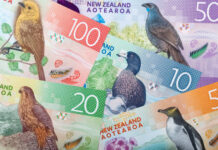Canada’s merchandise trade account registered a $718 million surplus in August after three consecutive months of deficits. This comes after July’s deficit was revised upward to $437 million.
Exports increased by a healthy 5.7% month-on-month (m/m) in August. Gains were broad-based as 7 of 11 sectors posted increases, with exports of unwrought gold and crude oil doing most of the heavy lifting. Exports of unwrought gold, silver, and platinum metals (+89.5% m/m) were driven by higher exports to the U.S. Due to rising oil prices, crude oil exports rose 19% m/m. As port activity resumed from the B.C. strikes, strong gains in coal (+14.2%), potash (+21.4%), and lumber (+5.8%) were observed.
Meanwhile, total imports bounced back from a weak July, up 3.8% m/m to $63.8 billion. Increases in import activity were driven by many sectors: Industrial machinery and equipment imports rose by 7.5% m/m, imports of chemical products were up 11.2%, and metal ores and non-metallic minerals gained 13.6% m/m. Aircraft equipment and parts imports lagged other sectors (-15.9% m/m). Once again, imports were helped by the port strike resumption, with consumer goods imports edging up 2.2% and electronic equipment and parts gaining 3.7%. Imports were up in 9 of 11 sectors.
In volume terms, overall imports increase by 1.2% m/m while exports moved up by 3.0% m/m in August.
Canada’s trade surplus with the United States widened from $8.2 billion in July to $10.4 billion in August, driven by higher exports of energy products.
In a separate report, Statistics Canada noted the country’s services trade deficit widened from $1.2 billion in July to $1.5 billion in August.
Key Implications
August’s trade data provided further evidence that net exports bounced back in the third quarter of this year. Recall that last quarter, export volumes were effectively flat after a strong Q1 showing, while imports edged higher, leading to a net drag on growth through the trade channel. As it stands, given trade data through July and August, we should see a sizable net contribution to Canada’s third quarter GDP.
Last month’s trade report cited that the effect of backlogs have affected trade activity. But given the healthy activity in trade this month, especially out of sectors most impacted by the strike, we’d say that the impact from the strike has largely dissipated. The broad-based improvement in imports and exports suggest some resilience in domestic and international demand with key trading partners.











